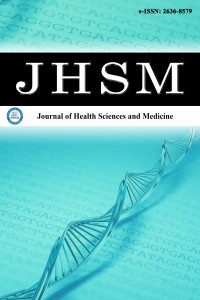1.
Tosto V, Ceccobelli M, Lucarini E, et al. Maternity blues: a narrative review. J Pers Med. 2023;13(1):154. doi:10.3390/jpm13010154
2.
Al-Abri K, Edge D, Armitage CJ. Prevalence and correlates of perinatal depression. Soc Psychiatry Psychiatr Epidemiol. 2023;58(11):1581-1590. doi:10.1007/s00127-022-02386-9
3.
Luciano M, Sampogna G, Del Vecchio V, et al. The transition from maternity blues to full-blown perinatal depression: results from a longitudinal study. Front Psychiatry. 2021;12:703180. doi:10.3389/fpsyt. 2021.703180
4.
Durgun SK, Ulaş SC. Knowledge and practices of primary health care professionals on maternal blues. Int J Mental Health Addict. 2023;21(1): 650-665.
5.
Gerli S, Fraternale F, Lucarini E, et al. Obstetric and psychosocial risk factors associated with maternity blues. J Matern Fetal Neonatal Med. 2021;34(8):1227-1232. doi:10.1080/14767058.2019.1630818
6.
Adeyemo EO, Oluwole EO, Kanma-Okafor OJ, Izuka OM, Odeyemi KA. Prevalence and predictors of postpartum depression among postnatal women in Lagos, Nigeria. Afr Health Sci. 2020;20(4):1943-1954. doi:10. 4314/ahs.v20i4.53
7.
Okunola TO, Awoleke JO, Olofinbiyi B, Rosiji B, Omoya S, Olubiyi AO. Postnatal blues: a mirage or reality. J Affect Disord Rep. 2021; 6:100237. doi:10.1016/j.jadr.2021.100237
8.
Shishido E, Shuo T, Shinohara K, Horiuchi S. Effects of epidural anesthesia on postpartum maternity blues and fatigue and its relation to changes in oxytocin. Jpn J Nurs Sci. 2021: 18(3); e12406. doi:10.1111/jjns.12406
9.
Mariño-Narvaez C, Puertas-Gonzalez JA, Romero-Gonzalez B, Peralta-Ramirez MI. Giving birth during the COVID-19 pandemic: the impact on birth satisfaction and postpartum depression. Int J Gynaecol Obstet. 2021;153(1):83-88. doi:10.1002/ijgo.13565
10.
Finneran MR. The ınfluence of parity on a woman’s perception of nursing support during labor and birth satisfaction. undergraduate thesis, Walsh University. Electronic theses and dissertations center. 2019. http://rave.ohiolink.edu/etdc/view?acc_num=walshhonors1555685126717134
11.
İsbir GG, Serçekuş P. The effects of intrapartum supportive care on fear of delivery and labor outcomes: a single-blind randomized controlled trial. J Nurs Res. 2017;25(2):112-119. doi:10.1097/JNR.0000000000000129
12.
Araújo AE, Delgado A, Maia JN, Lima Campos S, Wanderley Souto Ferreira C, Lemos A. Efficacy of spontaneous pushing with pursed lips breathing compared with directed pushing in maternal and neonatal outcomes. J Obstet Gynaecol. 2022;42(5):854-860. doi:10.1080/01443615. 2021.1945016
13.
Taşkın L. Doğum ve Kadın Sağlığı Hemşireliği. Akademisyen Kitabevi. 2019: ss. 314-315.
14.
Cicek S, Basar F. The effects of breathing techniques training on the duration of labor and anxiety levels of pregnant women. Complement Ther Clin Pract. 2017;29:213-219. doi:10.1016/j.ctcp.2017.10.006
15.
Patyal N, Kumari S, Verma D, Yadav H, Kaur J, Kaur H. Effectiveness of sacral massage on labor pain and satisfaction among antenatal mothers in active phase of labor. Nation J Commun Med. 2024;15(4):299-306. doi: 10.55489/njcm.150420243670
16.
Cadman T, Strandberg-Larsen K, Calas L, et al. Urban environment in pregnancy and postpartum depression: an individual participant data meta-analysis of 12 European birth cohorts. Environ Int. 2024;185: 108453. doi:10.1016/j.envint.2024.108453
17.
Ntaouti E, Gonidakis F, Nikaina E, et al. Maternity blues: risk factors in Greek population and validity of the Greek version of Kennerley and Gath’s blues questionnaire. J Matern Fetal Neonatal Med. 2020;33(13): 2253-2262. doi:10.1080/14767058.2018.1548594
18.
Gerli S, Fraternale F, Lucarini E, et al. Obstetric and psychosocial risk factors associated with maternity blues. J Matern Fetal Neonatal Med. 2021;34(8):1227-1232. doi:10.1080/14767058.2019.1630818
19.
Stein GS. The pattern of mental change and body weight change in the first post-partum week. J Psychosom Res. 1980;24(3-4):165-171. doi:10. 1016/0022-3999(80)90038-0
20.
Tascı KD, Mete S.Validity and reliability study of postpartum self-assessment scale. Atatürk Uni School Nurs J. 2007;10(2):20-29.
21.
Alvarado G, Schultz D, Malika N, Reed N. United States doula programs and their outcomes: a scoping review to inform state-level policies. Womens Health Issues. 2024;34(4):350-360. doi:10.1016/j.whi.2024.03.001
22.
Nazik E. Doğum, kadın sağlığı ve hastalıkları hemşireliği. Akademisyen Kitabevi. 2022.ss.206-207.
23.
Bayraktar E, Başer M. Effect of perineum massage with olive oil on perineum integrity and duration of second period of delivery.J Human Sci.2021;18(2):131-142. doi:10.14687/jhs.v18i2.6029
24.
Smith CA, Levett KM, Collins CT, Dahlen HG, Ee CC, Suganuma M. Massage, reflexology and other manual methods for pain management in labour. Cochrane Database Syst Rev. 2018;3(3):CD009290. doi:10.1002/ 14651858.CD009290.pub3
25.
Cankaya S, Can R. The effect of continuous supportive care on birth pain, birth fear, midwifery care perception, oxytocin use, and delivery time during the intrapartum period: An experimental study. Niger J Clin Pract. 2021;24(11):1624-1632. doi:10.4103/njcp.njcp_147_20
26.
Kashanian M, Javadi F, Haghighi MM. Effect of continuous support during labor on duration of labor and rate of cesarean delivery. Int J Gynaecol Obstet. 2010;109(3):198-200. doi:10.1016/j.ijgo.2009.11.028
27.
Bolbol-Haghighi N, Masoumi SZ, Kazemi F. Effect of massage therapy on duration of labour: a randomized controlled trial. J Clin Diagn Res. 2016;10(4):QC12-QC15. doi:10.7860/JCDR/2016/17447.7688
28.
Zuarez-Easton S, Erez O, Zafran N, Carmeli J, Garmi G, Salim R. Pharmacologic and nonpharmacologic options for pain relief during labor: an expert review. Am J Obstet Gynecol. 2023;228(5S):S1246-S1259. doi:10.1016/j.ajog.2023.03.003
29.
Ängeby K, Sandin-Bojö AK, Persenius M, Wilde-Larsson B. Women’s labour experiences and quality of care in relation to a prolonged latent phase of labour. Midwifery. 2019;77:155-164. doi:10.1016/j.midw.2019.07. 006
30.
Cohen WR, Friedman EA. The latent phase of labor. Am J Obstet Gynecol. 2023;228(5S):S1017-S1024. doi:10.1016/j.ajog.2022.04.029
31.
Rezaie-Keikhaie K, Hastings-Tolsma M, Bouya S, et al. Effect of aromatherapy on post-partum complications: a systematic review. Complement Ther Clin Pract. 2019;35:290-295. doi:10.1016/j.ctcp.2019. 03.010
32.
Míguez MC, Vázquez MB. Risk factors for antenatal depression: a review. World J Psychiatry. 2021;11(7):325-336. doi:10.5498/wjp.v11.i7.325
33.
Waldenström U, Hildingsson I, Rubertsson C, Rådestad I. A negative birth experience: prevalence and risk factors in a national sample. Birth. 2004;31(1):17-27. doi:10.1111/j.0730-7659.2004.0270.x

